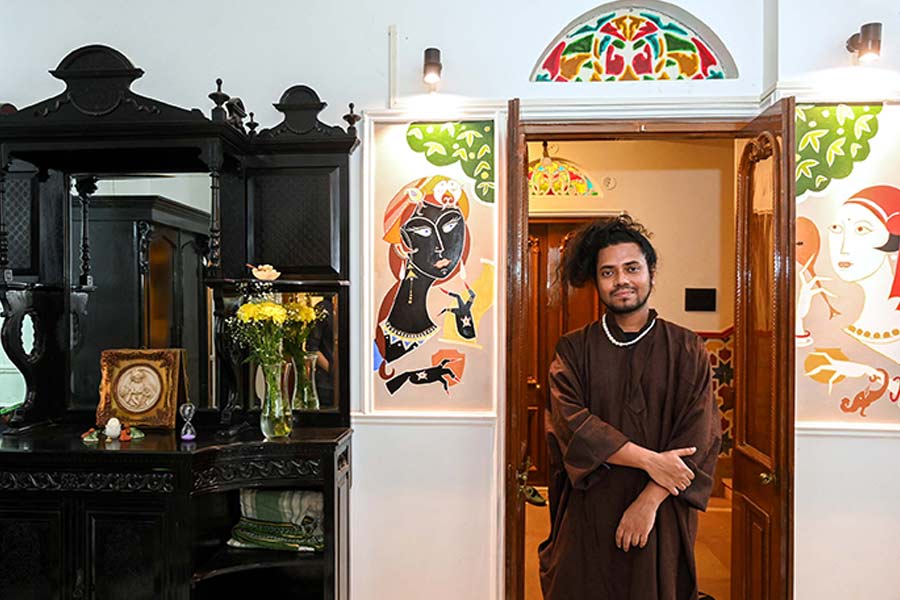For a city known for its slow pace, movement has always been integral to Kolkata. Be it the migration to (and later from) Kolkata for better opportunities, or Partition that plagued the city not once, but twice — displacement is characteristic to this city.
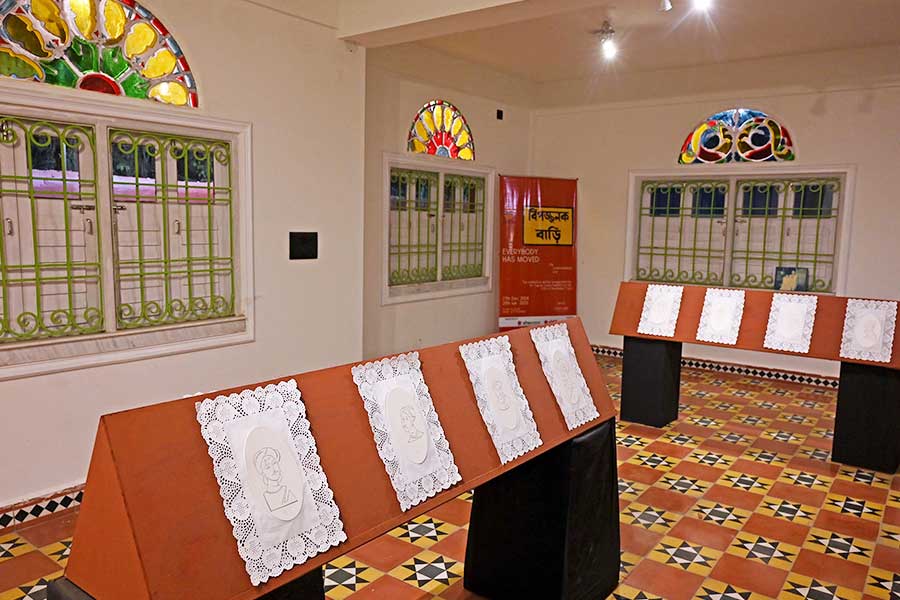
Roy traces his ancestors back to the 1200s, creating sketches where father and son match each other just a bit, but not quite
This felt deeply personal to Soumyadeep Roy, with his family redefining ‘movement’ across generations and geographies. The visual artist is exploring these complex movements of his ancestry in an intimate exhibition coursing through his home. Everybody Has Moved, presented by Indian Oil, is on from December 27 to January 20, at Studio Bari Kolkata in Dum Dum.
My Kolkata takes you through the journey.
Stories of childhood
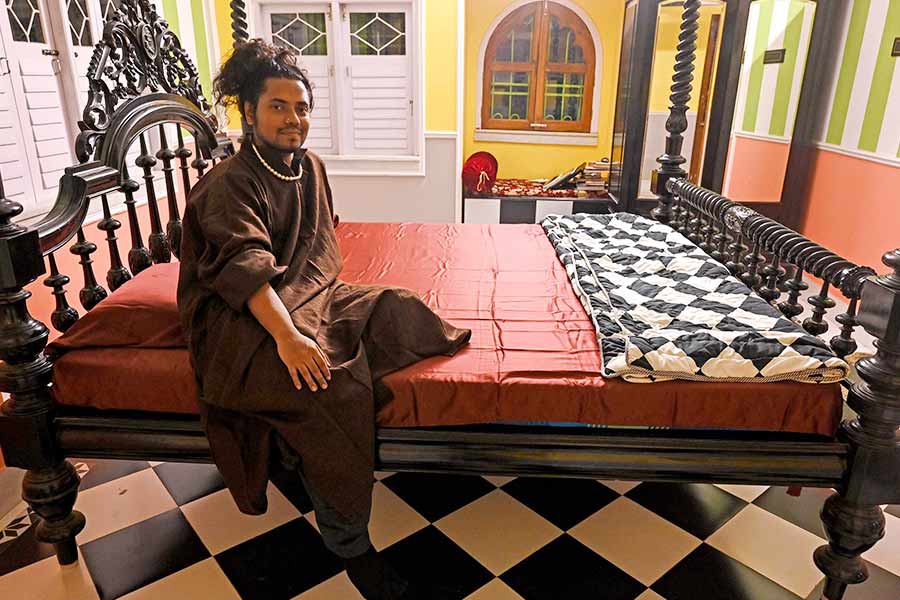
One of the most appealing aspects of the exhibition is its intimacy, with Roy taking visitors to his actual bedroom as a part of the walkthrough
The seeds of this exhibition were sown in 2019, when Roy lost five out of the 18 people in his family, all of whom had untimely deaths within a few months of each other. “At the time, I was working on the family history of Wajid Ali Shah, and it made me curious about my own,” he said. Roy’s love for history stems from his childhood, when his jethu’s (uncle) stories from the 1940s riots and World War II would spice up the lanes of Roy’s Dum Dum para, changing the way he looked at them. “I knew I wanted to archive these memories for myself,” said the artist.
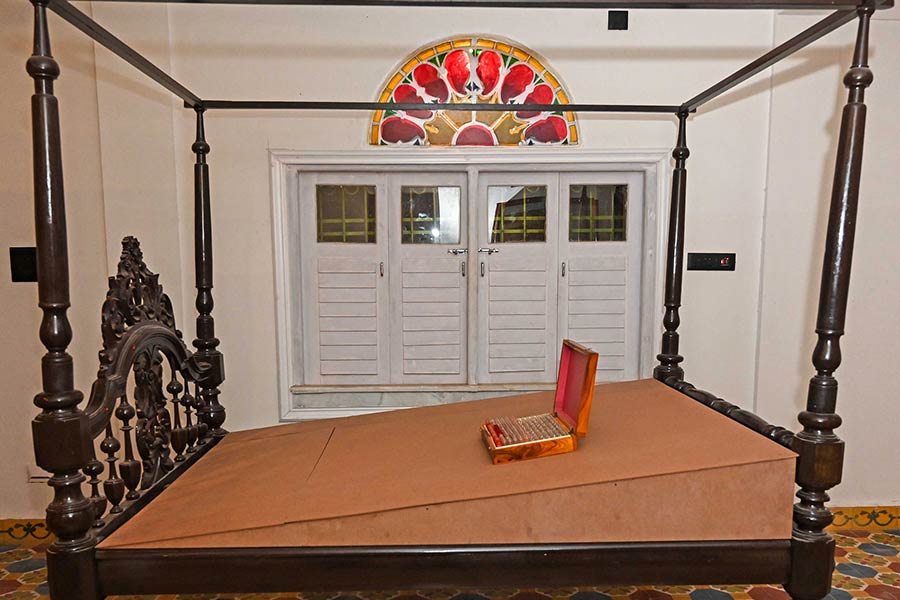
During their time in Senhati, the Bhairab river was an intrinsic part of the lives of Roy’s ancestors. This bed has been set up to mimic the riverfront, with vials comprising water, acrylic colour, and his own blood to signify how the river was in their blood
An invaluable resource fell into his hands when he came across Mulghar er Pura Britto, a book written by his family friend Ramanath Ghosh in the 1960s. While the book was originally meant to explore Ghosh’s family history, it ended up delving deeper into Roy’s family, dating back to the 1500s. Additional sources from genealogist Umesh Roychowdhury helped him trace his ancestry all the way back to the 1200s. Thus, Roy set out on the task of chronicling the history of more than 25 generations of his family, across 800 years.
Stories of migration
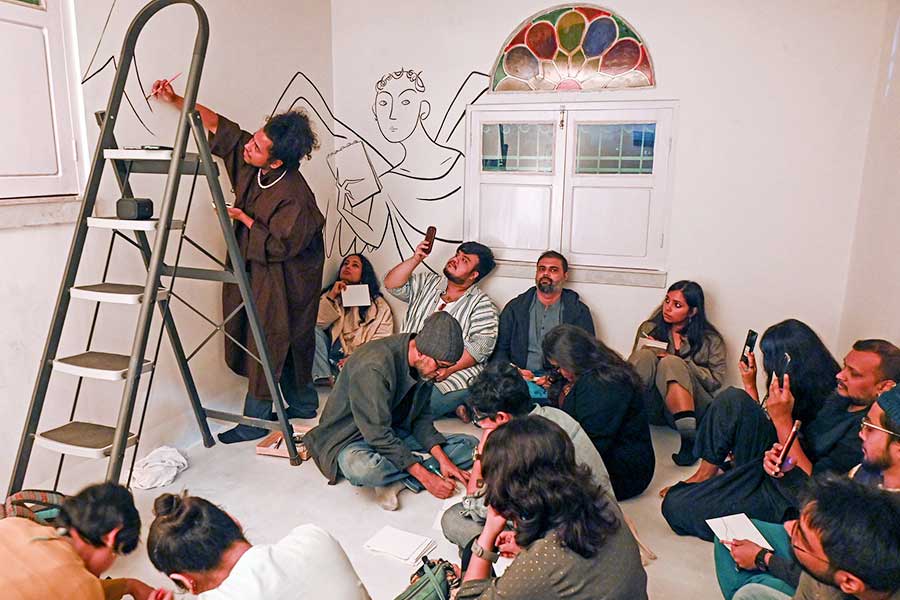
One of the highlights was the terrace room, ‘Khwabgah’, aka ‘The Dream Room’ in Persian, where Roy paints his dreams and nightmares every Sunday, inviting visitors to do the same for collective catharsis
The name, Everybody has Moved, encapsulates the family’s migration. The family’s current home is in a Dum Dum para, where Roy grew up. In the 1800s, his ancestors moved into a home on Grey Street (now Aurobindo Sarani). The stories of migration go further back to the family’s time in the Bangladeshi villages of Mulghar and Senhati from the 1300s - 1800s, right up to their residence in Rarh in the 1200s. Roy also theorises that before Bengal, his family had origins in the southern part of India. “As Bangals (those with roots in modern-day Bangladesh), we were very displaced and had a lot of back-and-forth across the border. I personally heard accounts of how the idea of home changed for my jethu. But given our origins in south India, it does cast a question of whether we are Bengali to begin with, and what is our identity?” he said, chuckling, while adding that one of his cousins has moved to Bengaluru, and is contemplating whether that is a homecoming too.
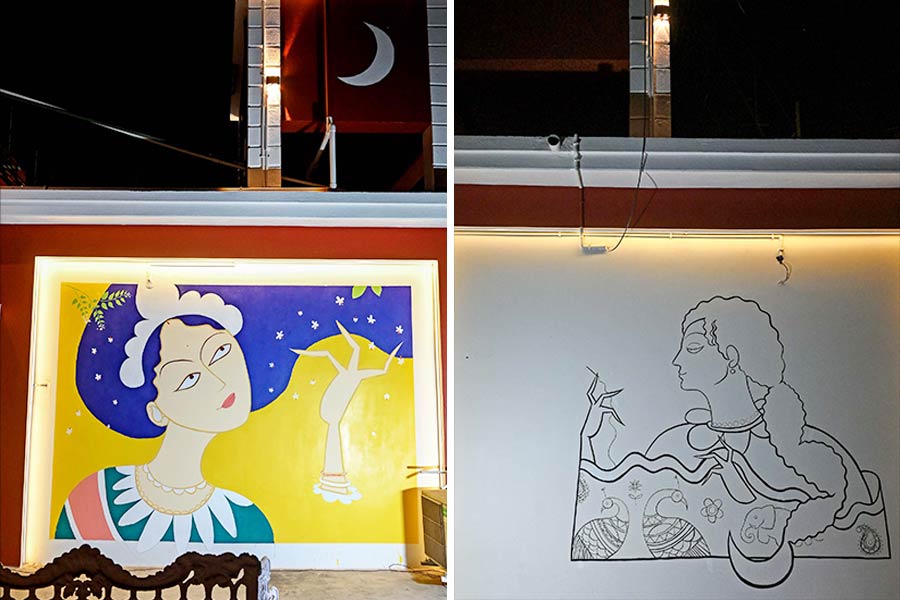
The terrace also has murals of Roy’s (L-R) maternal grandmother, Shefali, and paternal grandmother, Renuka. ‘Unfortunately, a lot of documentation is patrilineal, so I wanted to end with my two grandmothers, which was an extremely personal attachment,’ he said
Stories of a home
Roy’s family home was constructed between 2019 and 2024. With the work completed in 2024, the home became a natural choice for hosting the exhibition that told the story of his family. “It was originally conceived as a flat, but I intervened because I didn’t want the cookie-cutter architecture. I asked for the budget, and set about trying to create the house as a part of 18th-century Kolkata’s cosmopolitan legacy,” he smiles. The end result is a building that feels free from the clutches of time, with everything from the tiles to the stained glass being a poetic ode to some of the finest Bengali architecture.
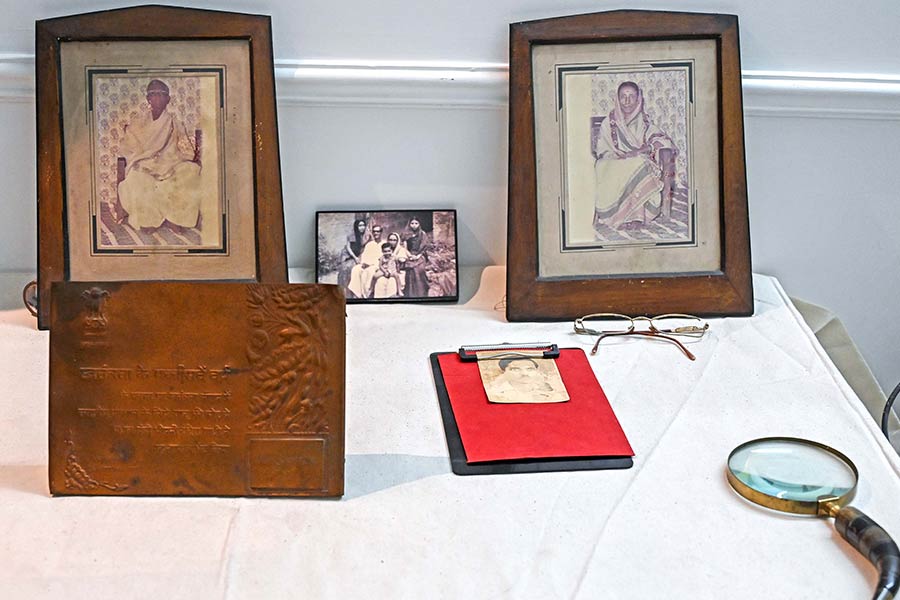
An entire section was dedicated to Roy’s grandfather Sukhomoy, who was a freedom fighter. ‘He refused the land offered to freedom fighters post-Independence, bringing us to Dum Dum. The lack of a house actually brought my father’s siblings closer, because in our family history, property brought conflict, while poverty brought closeness’
“The tiles came all the way from Tamil Nadu and took a month, while setting them up took two more weeks. Most of the doors in the house are repurposed from older doors. It took me almost two months to paint the windows. Doing the space took a lot of passion and some delusion, and it wouldn’t have been possible without the support of my parents and sister. The house has been appropriately named Bippojonok Bari, because it is made up of broken fragments of a fleeting city,” said the beaming artist.
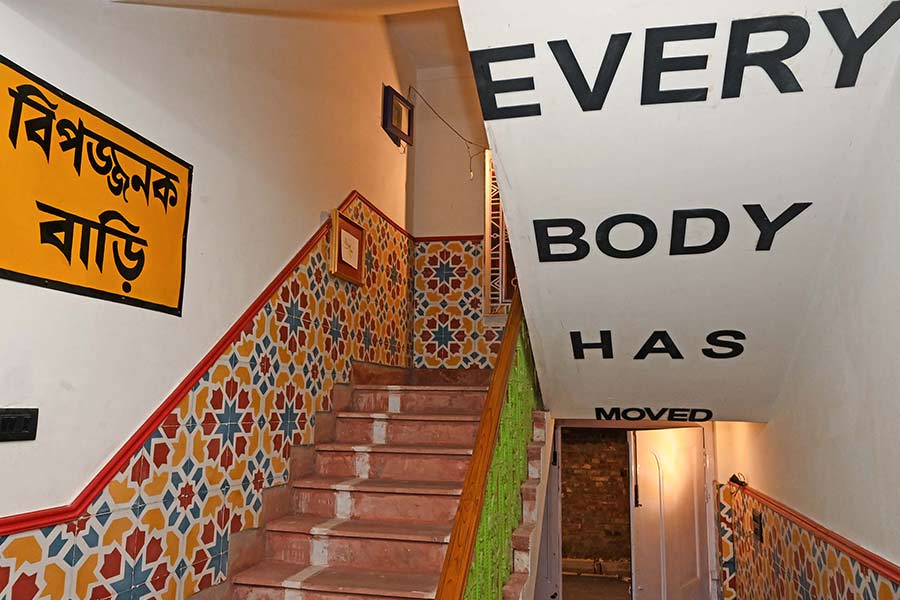
Roy’s home is appropriately named Bippojonok Bari as a nod to the different influences that created it
The ethos of this home made it the perfect setting for a narrative around the lives of the very people living in it. Walking through the exhibition feels like a stroll through Roy’s heart. “I didn’t want the distance of keeping trinkets behind a glass frame. This is about my family, in my house and studio space, and I’m literally bringing you into my room. That’s how intimate I wanted this exhibit to be.”
Stories of family
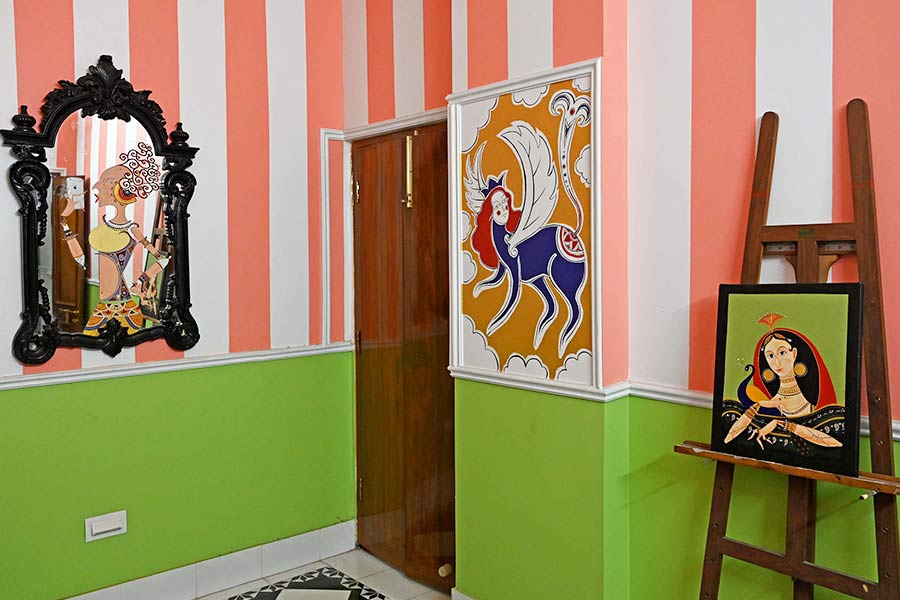
The exhibition culminates in Roy’s personal studio, providing visitors with a peek of the pieces he is currently working on
Apart from an exhaustive family tree, the exhibit examines the men of Roy’s ancestry through portraits. In the mix are nods to his time in Santiniketan, juxtaposed with his ancestor, Nepal Chandra Roy, who moved to teach at Visva Bharati for six months at the insistence of Rabindranath Tagore, but ended up staying there for the rest of his life.
The most disarming aspect of the exhibition is how personal every single corner of it feels. Roy’s deceased family members are paid homage through profound eye portraits that show just as much as they see. Every Sunday through the duration of the exhibition, in a room on the roof named Khwabgah, symbolising the Persian ‘Dream Palace’, he painted to make sense of his dreams and nightmares, in order to bring about catharsis with his loss. A peek into his bedroom presents a painting from his first solo exhibition which was held a decade ago, and another in his studio introduces viewers to what he is currently working on.
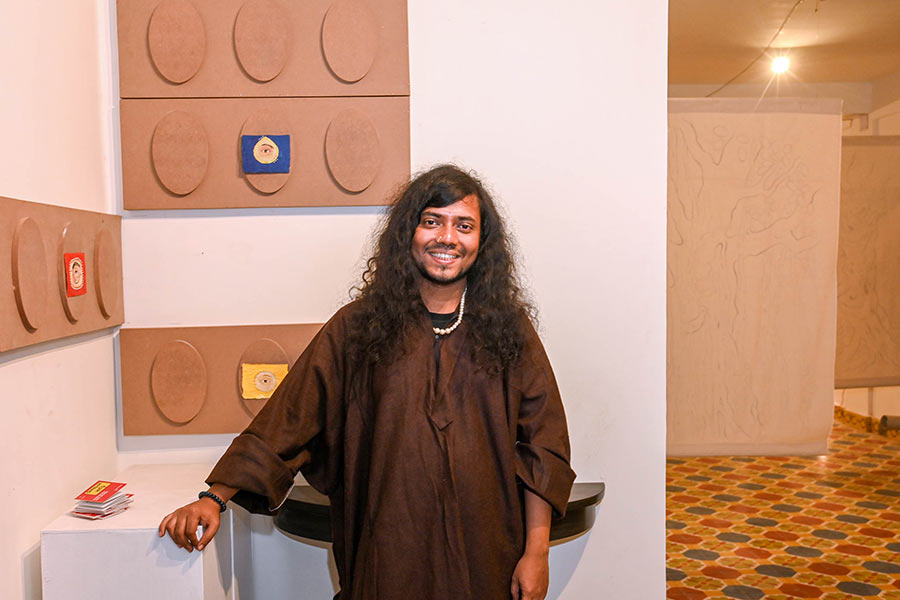
Since much of the exhibition was born of loss, Roy coped with grief by painting the eyes of his family members who had passed away young. ‘This was a practice in France before photography was invented, where people would paint eyes of those who left, because they couldn’t afford to get a full portrait made,’ he said
“The timelines and family branches are all over the place, in contrast to my art, which is very minimal. It is a connecting of dots and blurring of lines, with art being the only way I know to deal with loss. This wasn’t just about archiving it for research. It was about archiving it for me,” Roy concluded.
The most important takeaway from the exhibit is possibly the note that visitors see when they first enter the home. ‘The house itself mourns the loss of its immediate family members who never got to live here, and have probably moved to another realm.’
